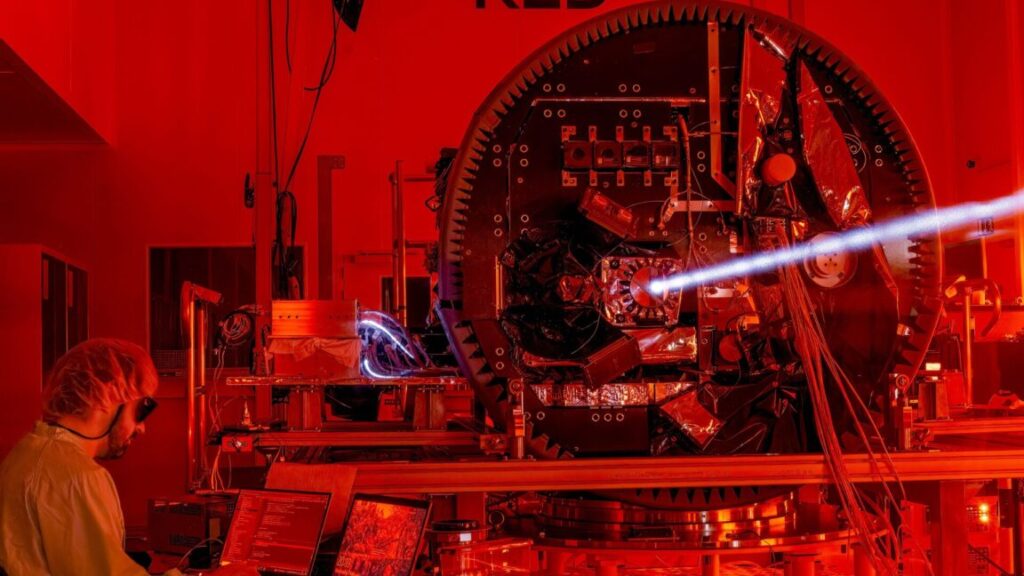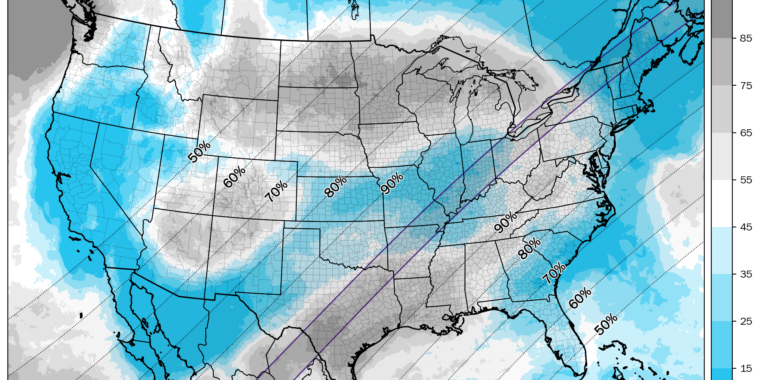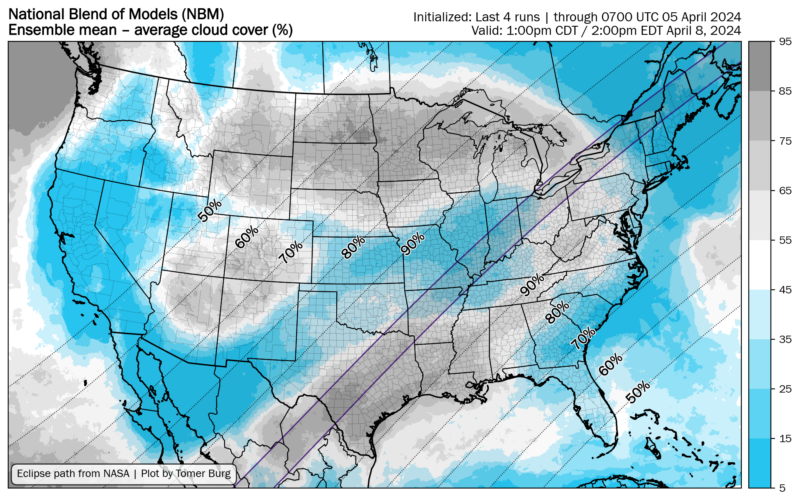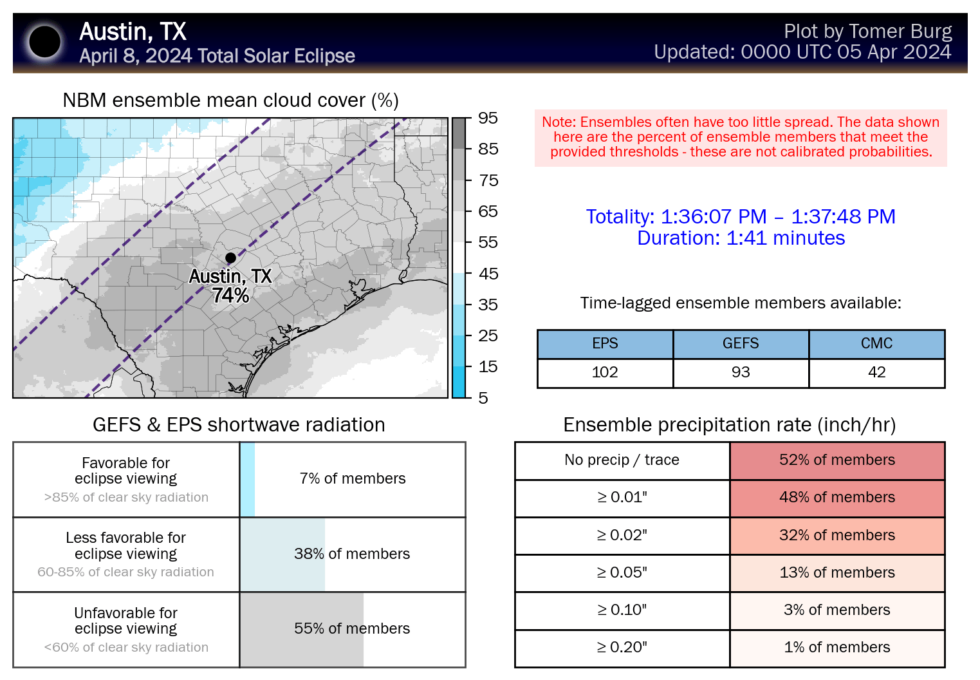Two European satellites launch on mission to blot out the Sun—for science
This will all happen nearly 40,000 miles above the Earth, so you won’t need your eclipse glasses.
An infrared view of a test of the Proba-3 mission’s laser ranging system, which will allow two spacecraft to fly in formation with millimeter-scale precision. Credit: ESA – M. Pédoussaut / J. Versluys
Two spacecraft developed by the European Space Agency launched on top of an Indian rocket Thursday, kicking off a mission to test novel formation flying technologies and observe a rarely seen slice of the Sun’s ethereal corona.
ESA’s Proba-3 mission is purely experimental. The satellites are loaded with sophisticated sensors and ranging instruments to allow the two spacecraft to orbit the Earth in lockstep with one another. Proba-3 will attempt to achieve millimeter-scale precision, several orders of magnitude better than the requirements for a spacecraft closing in for docking at the International Space Station.
“In a nutshell, it’s an experiment in space to demonstrate a new concept, a new technology that is technically challenging,” said Damien Galano, Proba-3’s project manager.
The two Proba-3 satellites launched from India at 5: 34 am EST (10: 34 UTC) Thursday, riding a Polar Satellite Launch Vehicle (PSLV). The PSLV released Proba-3 into a stretched-out orbit with a low point of approximately 356 miles (573 kilometers), a high point of 37,632 miles (60,563 kilometers), and an inclination of 59 degrees to the equator.
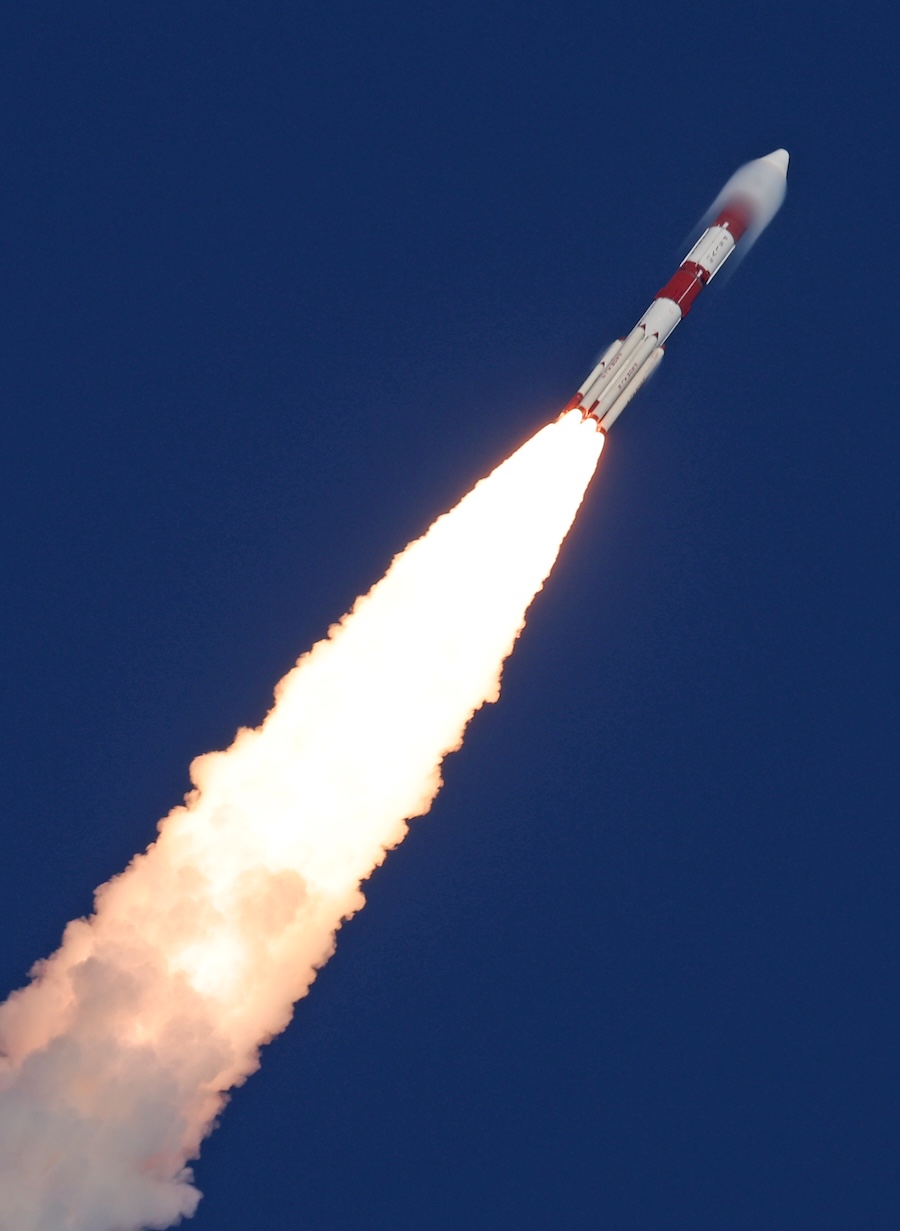
India’s PSLV accelerates through the speed of sound shortly after liftoff with the Proba-3 mission Thursday. Credit: ISRO
After initial checkouts, the two Proba-3 satellites, each smaller than a compact car, will separate from one another to begin their tech demo experiments early next year. The larger of the two satellites, known as the Coronagraph spacecraft, carries a suite of science instruments to image the Sun’s corona, or outer atmosphere. The smaller spacecraft, named Occulter, hosts navigation sensors and low-impulse thrusters to help it maneuver into position less than 500 feet (150 meters) from its Coronagraph companion.
From the point of view of the Coronagraph spacecraft, this is just the right distance for a 4.6-foot (1.4-meter) disk mounted to Proba-3’s Occulter spacecraft to obscure the surface of the Sun. The occultation will block the Sun’s blinding glare and cast a shadow just 3 inches (8 centimeters) onto the Coronagraph satellite, revealing the wispy, super-heated gases that make up the solar corona.
Why do this?
The corona is normally hidden by the brightness of the Sun and is best observed from Earth during total solar eclipses, but these events only last a few minutes. Scientists devised a way to create artificial eclipses using devices known as coronagraphs, which have flown in space on several previous solar research missions. However, these coronagraphs were placed inside a single instrument on a single spacecraft, limiting their effectiveness due to complications from diffraction or vignetting, where sunlight encroaches around the edge of the occulting disk or misses the imaging detector entirely.
Ideally, scientists would like to place the occulting disk much farther from the camera taking images of the Sun. This would more closely mimic what the human eye sees during a solar eclipse. With Proba-3, ESA will attempt to do just that.
“There was simply no other way of reaching the optical performance Proba-3 requires than by having its occulting disk fly on a separate, carefully controlled spacecraft,” said Joe Zender, ESA’s Proba-3 mission scientist. “Any closer and unwanted stray light would spill over the edges of the disk, limiting our close-up views of the Sun’s surrounding corona.”
But deploying one enormous 150-meter-long spacecraft would be cost-prohibitive. With contributions from 14 member states and Canada, ESA developed the dual-spacecraft Proba-3 mission on a budget of approximately 200 million euros ($210 million) over 10 years. Spain and Belgium, which are not among ESA’s highest-spending member states, funded nearly three-quarters of Proba-3’s cost.
The Proba-3 satellites will use several sensors to keep station roughly 150 meters away from one another, including inter-satellite radio links, satellite navigation receivers, and cameras on the Occulter spacecraft to help determine its relative position by monitoring LEDs on the Coronagraph satellite.
For the most precise navigation, the Occulter satellite will shine a laser toward a reflector on the Coronagraph spacecraft. The laser light bounced back to the Occulter spacecraft will allow it to autonomously and continuously track the range to its companion and send signals to fire cold gas thrusters and make fine adjustments.
The laser will give Proba-3 the ability to control the distance between the two satellites with an error of less than a millimeter—around the thickness of an average fingernail—and hold position for up to six hours, 50 times longer than the maximum duration of a total solar eclipse. Proba-3 will create the eclipses while it is flying farthest from Earth in its nearly 20-hour orbit.
Scientists hope to achieve at least 1,000 hours of artificial totality during Proba-3’s two-year prime mission.
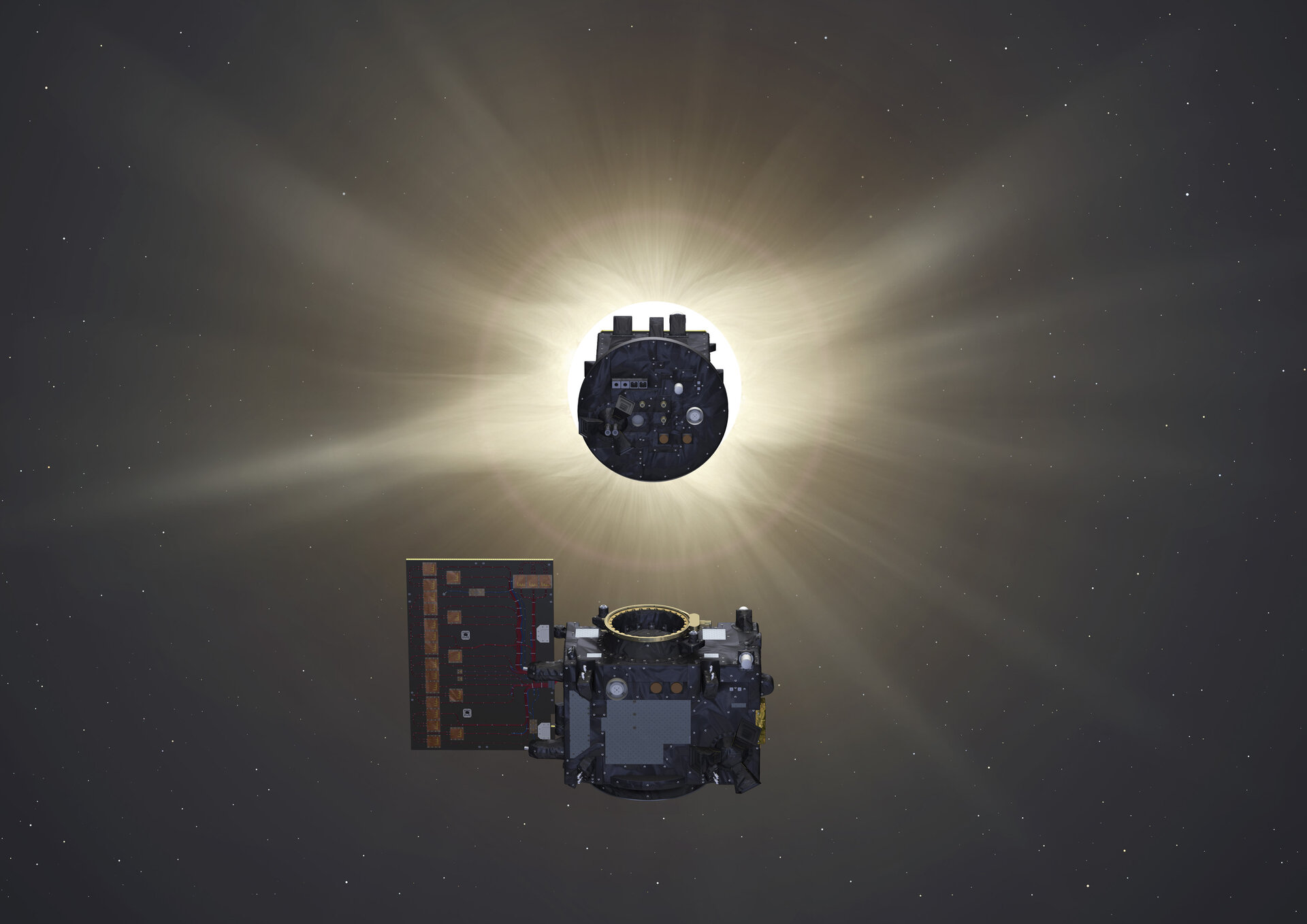
Proba-3’s Occulter spacecraft (top) and Coronagraph spacecraft (bottom) will hold position 150 meters away from one another. Credit: ESA-P. Carril
The corona extends millions of miles from the Sun’s convective surface, with temperatures as hot as 3.5 million degrees Fahrenheit. Still, the corona is easily outshined by the glare from the Sun itself. Scientists say it’s important to study this region to understand how the Sun generates the solar wind and drives geomagnetic storms that can affect the Earth.
NASA’s Parker Solar Probe, well-insulated from the scorching heat, became the first spacecraft to fly through the corona in 2021. It is collecting data on the actual conditions within the Sun’s atmosphere, while a network of other spacecraft monitor solar activity from afar to get the big picture.
Proba-3 is tasked with imaging a normally invisible part of the corona as close as 43,500 miles (70,000 kilometers) above the Sun’s surface. Extreme ultraviolet instruments are capable of observing the part of the corona closest to the Sun, while existing coronagraphs on other satellites are good at seeing the outermost portion of the corona.
“That leaves a significant observing gap, from about 3 solar radii down to 1.1 solar radii, that Proba-3 will be able to fill,” said Andrei Zhukov of the Royal Observatory of Belgium, principal investigator for Proba-3’s coronagraph instrument. “This will make it possible, for example, to follow the evolution of the colossal solar explosions called Coronal Mass Ejections as they rise from the solar surface and the outward acceleration of the solar wind.”
Proba-3’s coronagraph instrument will take images as often as once every two seconds, helping scientists search for small-scale fast-moving plasma waves that might be responsible for driving up the corona’s hellish temperatures. The mission will also hunt for the glow of plasma jets scientists believe have a role in accelerating the solar wind, a cloud of particles streaming away from the Sun at speeds of up to 1.2 million mph (2 million km/hr).
These are two of the core science objectives for the Proba-3 mission. But the project has a deeper purpose of proving two satellites can continually fly in tight formation. This level of precision could meet the exacting demands of future space missions, such as Mars Sample Return and the clearing of space junk from low-Earth orbit, according to ESA.
“Proba-3’s coronal observations will take place as part of a larger in-orbit demonstration of precise formation flying,” said Josef Aschbacher, ESA’s director general. “The best way to prove this new European technology works as intended is to produce novel science data that nobody has ever seen before.
“It is not practical today to fly a single 150-meter-long spacecraft in orbit, but if Proba-3 can indeed achieve an equivalent performance using two small spacecraft, the mission will open up new ways of working in space for the future,” Aschbacher said in a statement. “Imagine multiple small platforms working together as one to form far-seeing virtual telescopes or arrays.”
Two European satellites launch on mission to blot out the Sun—for science Read More »
